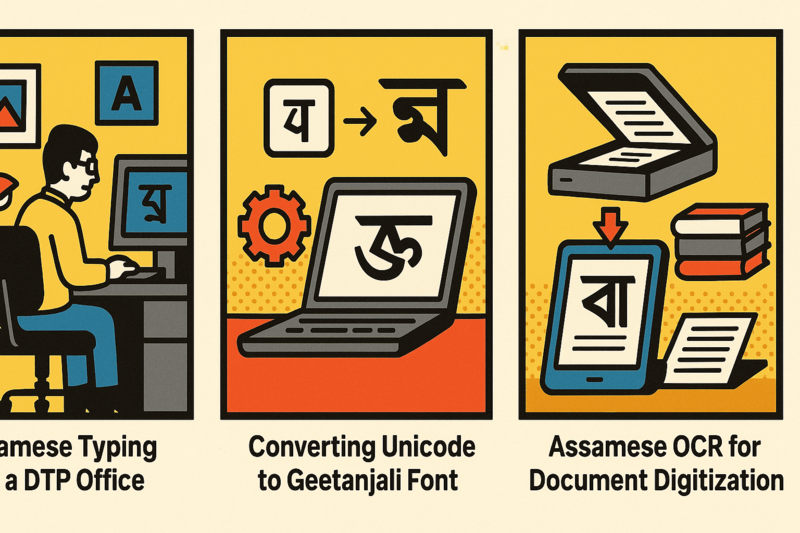How to Convert Unicode to Geetanjali Easily – A Beginner’s Guide

How to Convert Unicode to Geetanjali Easily – A Beginner’s Guide
Most Assamese text today is typed in Unicode. But in traditional DTP systems used by printing houses, Geetanjali remains one of the most widely used Assamese fonts.
This creates a real need for accurate, reliable Unicode → Geetanjali conversion, especially for book reprints, newspapers, magazines, and scanned document processing.
Why Unicode and Geetanjali Still Co-exist
Unicode is the modern global standard. It works flawlessly on:
- Websites
- Mobile apps
- Social media
- Modern text editors
- Translation systems
However, many legacy DTP systems use Geetanjali, especially older publishing pipelines. These studios prefer it because:
- It fits their print-based workflows
- They have existing font libraries
- They want consistency with older publications
This is why a converter is essential.
Why Manual Conversion Never Works
Trying to manually retype Geetanjali output leads to:
- Wrong ligatures
- Broken characters
- Loss of conjunct structure
- Hours of extra work
- Inconsistent rendering in print
This is why professionals rely on tools that are built specifically for Assamese font conversion.
How a Proper Unicode → Geetanjali Converter Works
A good converter should:
- Preserve all conjunct characters
- Handle long-form Assamese words
- Maintain spacing, punctuation, and structure
- Deliver print-ready output
- Work instantly and predictably
Software like Rupantarak, trusted for years across Assam, performs this conversion with a very high success rate — making it the industry standard.
Common Use Cases
- Printing manuscripts written in Unicode
- Preparing newspapers with older DTP pipelines
- Reprinting older books using modern digital copies
- Creating Assamese brochures and booklets in legacy formats
- Maintaining consistency with previously printed material
Conclusion
Converting Unicode to Geetanjali should be fast, accurate, and headache-free. With the right tool, you can ensure perfect Assamese output every single time.
This is why DTP professionals and printing houses rely on Rupantarak — it provides clean, stable, and ready-to-print Assamese text conversion without manual corrections.